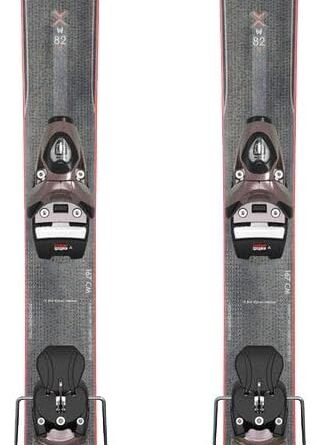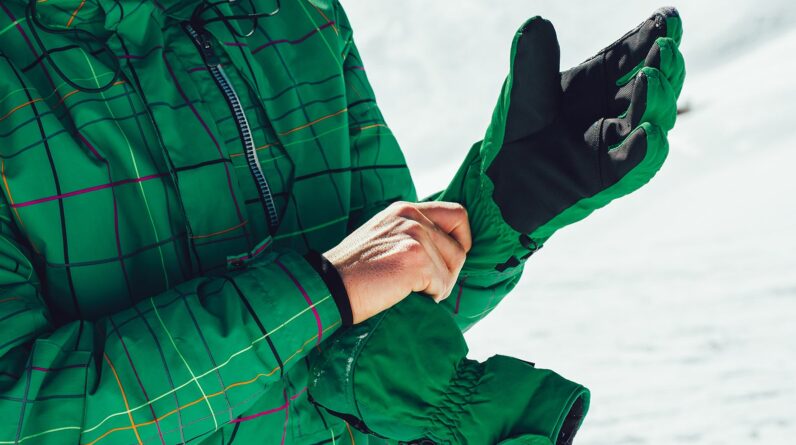
Whether you’re a seasoned water skier or just starting out, taking care of your water skiing gloves is essential for a safe and enjoyable experience on the water. From protecting your hands against blisters to extending the lifespan of your gloves, proper care and storage can make a significant difference. In this article, we will share some valuable tips on how to properly care for and store your water skiing gloves, so you can keep them in top-notch condition and ready for your next adrenaline-pumping adventure. So let’s dive in and discover the best practices for maintaining your water skiing gloves.
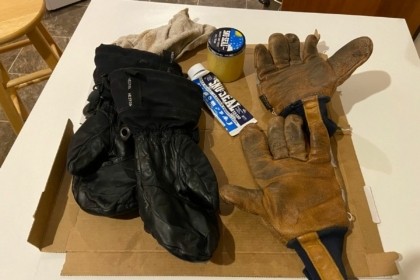
This image is property of cdn.divein.com.
Cleaning Your Water Skiing Gloves
Removing Excess Dirt and Debris
When it comes to cleaning your water skiing gloves, the first step is to remove any excess dirt and debris that may have accumulated during your time on the water. Gently brush off the gloves using a soft-bristle brush or a cloth to loosen and remove any loose particles. Be careful not to apply too much force, as this can potentially damage the material of the gloves.
Using Mild Soap and Water
Once you’ve removed the excess dirt and debris, it’s time to clean your water skiing gloves. Fill a basin or sink with lukewarm water and add a small amount of mild soap. Gently agitate the water to create a soapy solution. Immerse the gloves in the water and use your hands to gently massage and clean the gloves. Pay special attention to any areas that may have accumulated dirt, such as the palms and fingers.
Avoiding Harsh Chemicals
While it may be tempting to use strong cleaning agents to remove stubborn stains or odors from your water skiing gloves, it’s important to avoid harsh chemicals. These chemicals can be too abrasive and may cause damage to the material or reduce the gloves’ overall effectiveness. Stick to mild soap and water for regular cleaning, and save the harsh chemicals for more extreme cases, if necessary.
Drying Thoroughly
After cleaning your water skiing gloves, it’s crucial to dry them thoroughly before storing them. Gently squeeze out any excess water without wringing or twisting the gloves. Lay them flat on a clean and dry surface, preferably in a well-ventilated area. Avoid direct sunlight or heat sources, as this can cause the material to deteriorate or shrink. Allow the gloves to air dry completely before moving on to the next step.
Protecting the Material
Avoiding Contact with Sharp Objects
To prolong the life of your water skiing gloves, it’s important to avoid any contact with sharp objects. The material of the gloves can easily puncture or tear if it comes into contact with sharp edges or rough surfaces. When not in use, store your gloves in a safe place away from any potential hazards or objects that could cause damage.
Applying Leather Conditioner
If your water skiing gloves are made of leather, it’s beneficial to apply a leather conditioner regularly. This will help keep the material soft, supple, and resistant to cracking or drying out. Follow the manufacturer’s instructions for the specific leather conditioner you choose, and apply it evenly to the gloves. Allow the conditioner to penetrate the material before wiping off any excess.
Avoiding Extreme Temperatures
Extreme temperatures can have a negative impact on the material of your water skiing gloves. Avoid exposing them to excessive heat or cold, as this can cause the material to warp, shrink, or become brittle. When not in use, store your gloves in a cool and dry place, away from direct sunlight or any extreme temperature fluctuations.
Using UV Protection
The sun’s harmful UV rays can cause the material of your water skiing gloves to fade or deteriorate over time. To protect your gloves from UV damage, apply a UV protectant spray or lotion to the material. This will help maintain the gloves’ color and integrity, ensuring they continue to perform at their best for longer periods.
Storing Your Water Skiing Gloves
Avoiding Moisture
Moisture can lead to mold, mildew, and unpleasant odors in your water skiing gloves. Before storing them, ensure they are completely dry, as any remaining moisture can create a breeding ground for bacteria. If your gloves are damp, leave them out to air dry before placing them in storage. Additionally, consider placing a moisture-absorbent product, such as silica gel packs, in the storage container to help absorb any excess moisture.
Keeping Gloves Separate
When storing your water skiing gloves, it’s essential to keep them separate from other items. The gloves may pick up odors or transfer colors if they come into contact with other materials. Store them in a designated spot or use a dedicated glove compartment or bag to prevent any unwanted interactions.
Utilizing Proper Ventilation
Proper ventilation is crucial when storing your water skiing gloves. Ensure the storage area is well-ventilated to allow air circulation, as this helps prevent the buildup of moisture and reduces the risk of mold or mildew formation. Avoid storing your gloves in airtight containers or plastic bags, as this can trap moisture and lead to unpleasant odors or damage to the gloves.
Avoiding Direct Sunlight
Direct sunlight can fade the colors and deteriorate the material of your water skiing gloves. When selecting a storage location, choose an area away from direct sunlight. If you don’t have access to a dark storage space, consider using a UV-protective storage bag or covering the gloves with a light-blocking cloth to shield them from harmful rays.
Avoiding Excessive Stretching
Proper Sizing and Fit
Choosing water skiing gloves that fit properly is essential to avoid excessive stretching and potential discomfort. When purchasing new gloves, refer to the manufacturer’s sizing chart and guidelines to determine the correct size for your hands. It’s important to have a snug fit without excessive tightness, as this can restrict movement and cause discomfort or even pain during skiing.
Avoiding Overstretching
While water skiing, it’s crucial to avoid overstretching your gloves through excessive force or gripping. This can cause the material to stretch beyond its intended limits, resulting in a loose and ill-fitting glove. Be mindful of your grip strength and handle the ski rope or handles with care to prevent unnecessary stretching.
Utilizing Adjustment Straps
Many water skiing gloves come with adjustable straps or closures to ensure a secure fit. Properly utilizing these straps can help prevent excessive stretching and keep the gloves in place during your water skiing sessions. Adjust the straps according to your preference and comfort level, ensuring a snug fit without cutting off circulation to your hands.
Regular Inspection
Regularly inspecting your water skiing gloves is important to identify any signs of excessive stretching or wear. Check for loose areas or any noticeable changes in the glove’s shape. If you notice any significant stretching, consider replacing your gloves to maintain optimal performance and protection.
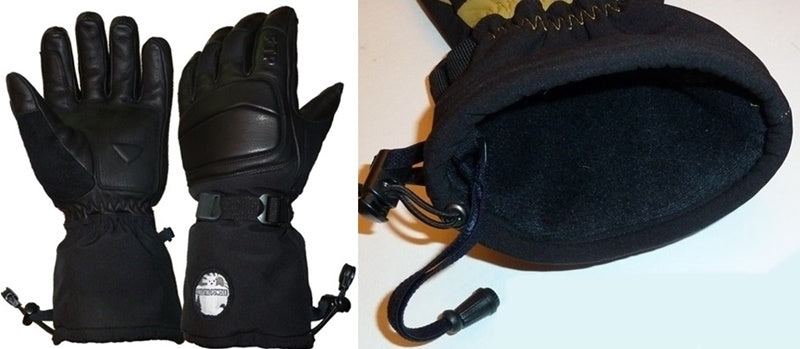
This image is property of cdn.shopify.com.
Regular Inspections
Checking for Damages
Regularly inspecting your water skiing gloves for damages is crucial to ensure they provide the necessary protection during your water skiing adventures. Look for any visible signs of damage, such as tears, holes, or worn-out areas. Damaged gloves can compromise your safety and should be addressed promptly.
Stitching and Seam Integrity
Inspect the stitching and seam integrity of your water skiing gloves during your regular inspections. Ensure that the seams are intact, without any loose threads or frayed edges. Tight, well-executed stitching is vital for a durable and long-lasting pair of gloves. If you notice any issues with the stitching or seams, consider repairing or replacing the gloves as needed.
Evaluating for Wear and Tear
Over time, water skiing gloves can experience wear and tear due to their exposure to the elements and repetitive use. Look for signs of thinning material, discoloration, or areas where the material appears worn down. Evaluating the overall wear and tear will help you determine when it’s time to replace your gloves and invest in a new pair.
Replacing When Necessary
When your water skiing gloves exhibit significant damages, wear, or a decreased ability to provide the necessary protection, it’s crucial to replace them. Continuing to use gloves that are past their prime can put you at risk of injury and compromise your overall water skiing experience. Invest in new gloves that fit properly and offer the level of performance you need.
Handling and Putting on Gloves
Avoiding Excessive Force
When handling your water skiing gloves, it’s essential to avoid applying excessive force. Pulling on the gloves with too much force can cause unnecessary strain on the material, potentially leading to stretching or tearing. Take your time and handle the gloves with care when putting them on or taking them off.
Proper Finger Insertion
To ensure a comfortable fit and ease of movement, properly insert your fingers into the designated finger sections of the gloves. Avoid bunching or folding the material, as this can create discomfort and restrict your ability to grip properly. Take the time to align each finger with its corresponding section, ensuring a smooth and comfortable fit.
Securing Velcro Straps
If your water skiing gloves feature Velcro straps for secure closure, make sure to properly secure them. The Velcro should be firmly fastened, providing a snug fit without cutting off circulation. Take care not to overtighten the straps, as this can lead to discomfort or restricted movement of your hands.
Handling with Care
Handle your water skiing gloves with care throughout the process of putting them on, adjusting straps, and removing them. Avoid tugging or pulling on the gloves excessively, as this can cause unnecessary strain on the material. Treating your gloves gently will help maintain their durability and prolong their lifespan.

This image is property of www.wikihow.com.
Washing Frequency
Rinsing after Each Use
To remove any residual salt, chlorine, or dirt, it’s important to rinse your water skiing gloves after each use. Rinse them thoroughly with clean water, paying attention to all areas, including the palms, fingers, and cuffs. This helps prevent the accumulation of abrasive substances that can lead to deterioration or damages over time.
Regular Washing in Mild Soap
In addition to rinsing after each use, it’s essential to regularly wash your water skiing gloves with mild soap. Follow the instructions outlined in the “Cleaning Your Water Skiing Gloves” section to ensure a thorough cleaning while avoiding the use of harsh chemicals that can be damaging.
Follow Manufacturer’s Instructions
Different materials and brands may have specific washing instructions. Always refer to the manufacturer’s instructions included with your water skiing gloves. Following these instructions will ensure that you are caring for your gloves in the best way possible and extending their lifespan.
Avoiding Over-Washing
While it’s important to keep your water skiing gloves clean, over-washing can lead to unnecessary wear and tear. Avoid washing your gloves more frequently than recommended, as this can cause the material to deteriorate more quickly. Use your judgment to determine the appropriate frequency of washing based on your usage intensity and the condition of the gloves.
Removing Odors
Air Drying
If your water skiing gloves develop unpleasant odors, one of the simplest and most effective ways to remove them is by air drying the gloves thoroughly. Odors are often caused by bacteria or mildew that thrive in moist environments. By allowing the gloves to dry completely after each use, you can help eliminate the conditions that facilitate odor-causing microorganisms.
Using Deodorizing Products
If air drying alone doesn’t eliminate the odors, you can try using deodorizing products specifically designed for sports gear or gloves. These products are available in various forms, such as sprays or powders, and can be applied to the gloves to neutralize odors. Follow the instructions provided by the manufacturer of the deodorizing product for best results.
Avoiding Storage in Closed Containers
Closed containers or bags can trap moisture and promote the growth of odor-causing bacteria. Avoid storing your water skiing gloves in closed containers or plastic bags, especially when they are still damp. Instead, store the gloves in a well-ventilated area or use a breathable glove compartment or bag specifically designed for the purpose.
Washing with Baking Soda
Another effective method for removing odors from your water skiing gloves is to wash them with baking soda. Create a mixture of water and baking soda, and gently scrub the gloves with the solution. Baking soda is known for its odor-absorbing properties, and this method can help neutralize any lingering odors in your gloves.
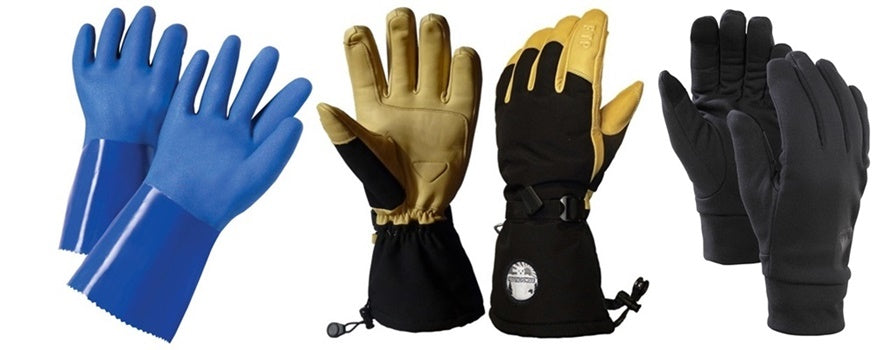
This image is property of cdn.shopify.com.
Repairing Minor Damages
Using Strong Adhesive
If your water skiing gloves have minor damages, such as small tears or frayed edges, you can repair them using a strong adhesive specifically designed for the type of material your gloves are made of. Apply a small amount of adhesive to the damaged area, following the instructions provided by the adhesive manufacturer. Press the damaged area together firmly and let it dry completely before using the gloves.
Applying Patch or Stitching
For slightly larger tears or damaged sections, you may need to apply a patch or stitching to reinforce and repair the damaged area. Depending on the material of your gloves, there are patch kits available that provide a quick and easy solution. Alternatively, if you have basic sewing skills, you can carefully stitch the damaged area, ensuring a secure and neat repair.
Seeking Professional Repair
For more significant damages or if you’re unsure about repairing the gloves yourself, it’s best to seek professional repair services. Local outdoor sports stores or specialized repair shops may offer services to repair water skiing gloves. The professionals will have the necessary expertise and tools to properly assess and repair the damages, ensuring the gloves’ functionality and integrity.
Preventing Further Damage
In addition to repairing minor damages promptly, it’s important to take measures to prevent further damage to your water skiing gloves. Avoid activities or situations that may put your gloves at risk, such as unnecessary rough handling or excessive exposure to abrasive surfaces. By exercising caution and proper care, you can prolong the lifespan of your gloves and avoid costly repairs.
Replacing Gloves
Evaluating Overall Condition
Over time, despite regular cleaning and proper care, your water skiing gloves will naturally wear out. It’s important to regularly evaluate their overall condition and consider replacing them when necessary. Pay attention to any significant signs of wear, deterioration, or reduced performance that may indicate it’s time for a new pair.
Loss of Grip or Padding
Water skiing gloves are designed to provide you with a secure grip and added padding for protection during your water skiing activities. If you notice a significant loss of grip or padding, it may be a sign that your gloves have worn out and are no longer providing the necessary functionality. Consider replacing them to ensure your hands are adequately protected.
Tearing or Hole Formation
Tears or the formation of holes in your water skiing gloves can significantly compromise their effectiveness. If the tears are too large or the holes are substantial, repairs may not be feasible, and it’s best to invest in a new pair of gloves. Continuously using gloves with tears or holes can lead to further damage or injuries.
Age and Usage
Lastly, age and frequency of use are important factors to consider when deciding whether to replace your water skiing gloves. As gloves age and are exposed to regular wear and tear, their material may become less durable and reliable. Additionally, if you frequently engage in water skiing activities, your gloves may wear out faster, requiring more frequent replacements. Assess the age and usage of your gloves to make an informed decision about replacement.
Caring for and storing your water skiing gloves properly is essential for maintaining their functionality, durability, and longevity. By following these tips and guidelines, you can ensure that your gloves continue to provide you with the necessary protection and grip for many thrilling water skiing adventures to come. Remember to clean them thoroughly, protect the material, store them appropriately, avoid excessive stretching, perform regular inspections, handle them with care, wash them with the right frequency, remove odors effectively, repair minor damages promptly, and replace them when necessary. With proper care, your water skiing gloves will be ready to accompany you on many more exciting rides across the waves.
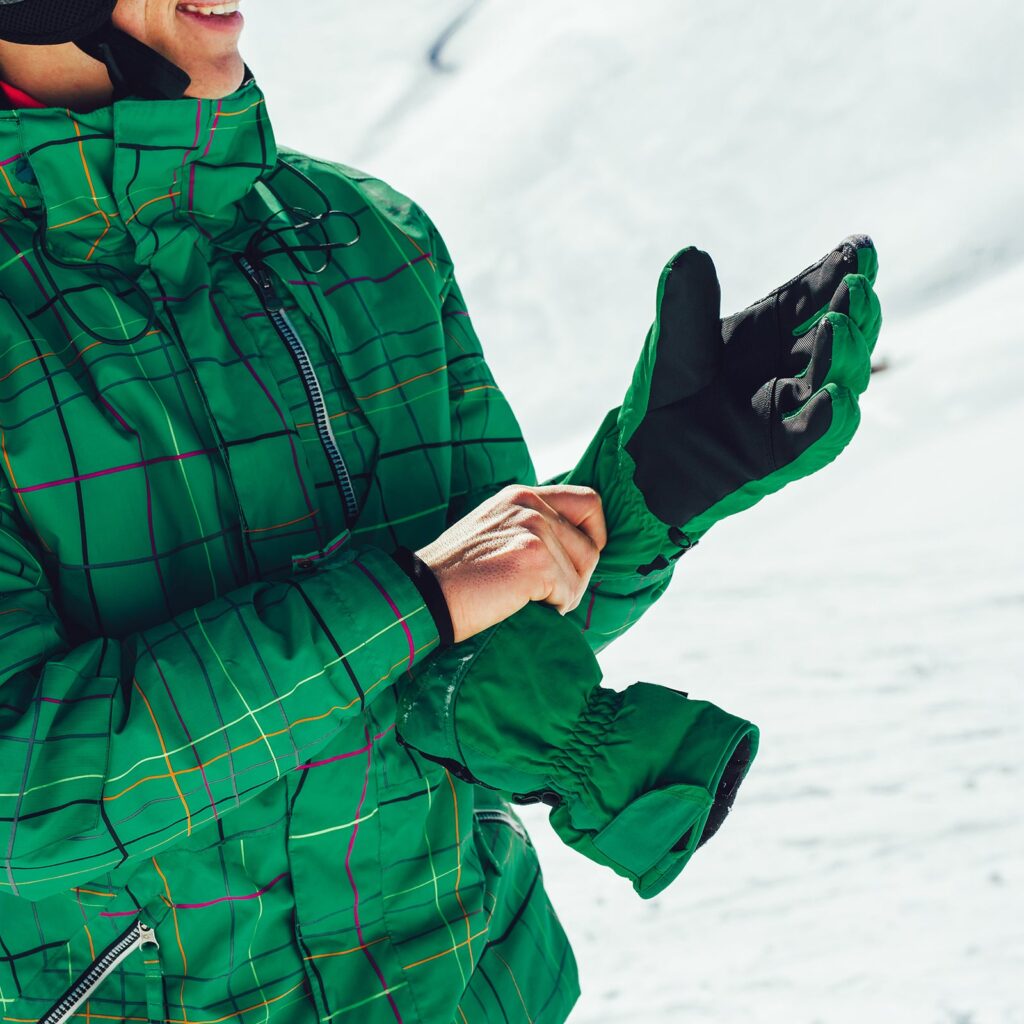
This image is property of cdn.outsideonline.com.






